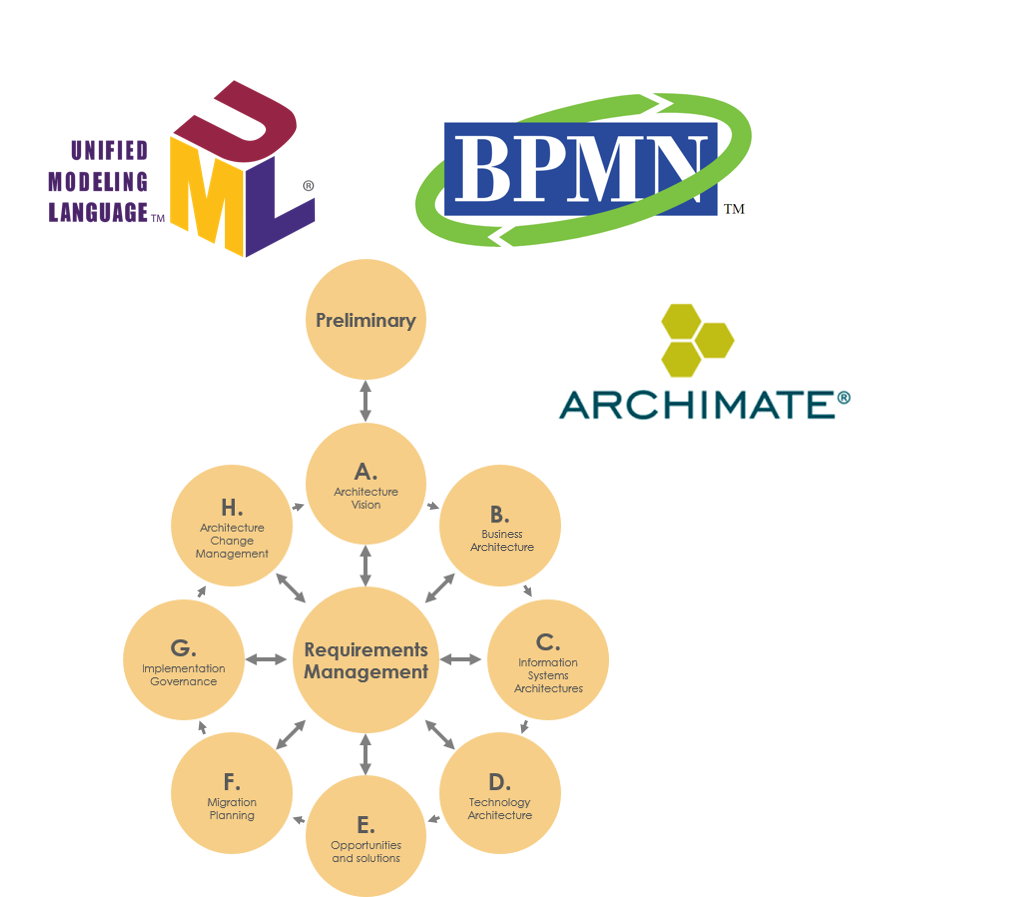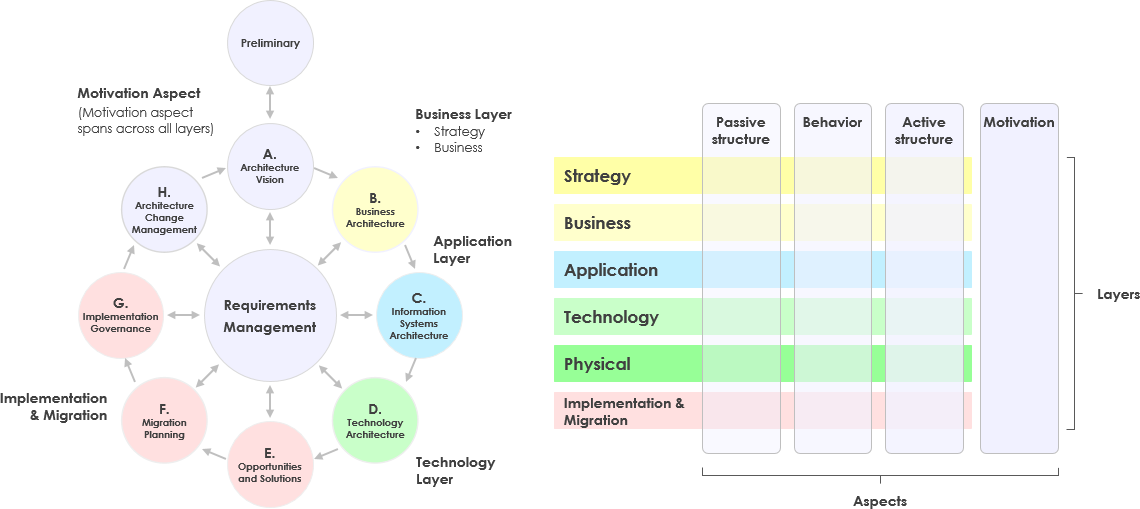Introduction
Visual Paradigm is a powerful tool for enterprise architecture (EA) that integrates multiple modeling standards, including TOGAF, ArchiMate, UML, and BPMN. This integration provides a structured and visually comprehensive approach to architecture development, enabling organizations to align their business and IT strategies effectively. This guide explores how Visual Paradigm enhances EA through these integrations, providing practical examples and insights.

Key Points of Integration
ArchiMate and TOGAF
ArchiMate serves as a visual language for representing architectural concepts within the TOGAF Architecture Development Method (ADM) phases. Visual Paradigm integrates ArchiMate with TOGAF, allowing architects to create detailed visual models that align with TOGAF’s methodology [5].

-
Example: When developing a Business Architecture (Phase B in TOGAF ADM), architects can use ArchiMate to model business processes, organizational structures, and business capabilities. This visual representation helps stakeholders understand the business context and requirements more clearly [4].
-
Benefits:
- Clarity and Communication: ArchiMate diagrams enhance clarity by visually representing complex architectural concepts, making it easier for stakeholders to understand and discuss [2].
- Structured Approach: The integration ensures a structured approach to architecture development, aligning visual models with TOGAF’s methodological phases [5].
BPMN and TOGAF
BPMN (Business Process Model and Notation) is supported by Visual Paradigm, enabling users to model business processes within the TOGAF framework [3].
-
Example: In the Architecture Vision phase (Phase A), BPMN can be used to model current and future business processes. This helps in identifying gaps and opportunities for improvement, which are crucial for developing the architecture vision [3].
-
Benefits:
- Process Optimization: BPMN diagrams help in analyzing and optimizing business processes, ensuring they align with the overall architecture vision [3].
- Stakeholder Engagement: Visual representations of business processes engage stakeholders more effectively, facilitating better feedback and validation [3].
UML and TOGAF
UML (Unified Modeling Language) is another modeling standard supported by Visual Paradigm, used alongside TOGAF for software design and system modeling [3].
-
Example: During the Information Systems Architectures phase (Phase C), UML can be used to create class diagrams, sequence diagrams, and use case diagrams. These diagrams help in detailing the application architecture and ensuring it meets the business requirements defined in earlier phases [3].
-
Benefits:
- Detailed Design: UML provides a detailed design perspective, complementing the high-level architectural views provided by ArchiMate and BPMN [3].
- Consistency: Using UML within the TOGAF framework ensures consistency between business, application, and technology architectures [3].
Visual Paradigm’s TOGAF ADM Guide-Through Process
Visual Paradigm’s TOGAF ADM Guide-Through Process streamlines enterprise architecture development by providing a step-by-step approach, enhanced by the integration of ArchiMate for visual modeling and communication [5].

-
Example: In Phase E (Opportunities & Solutions), architects can use ArchiMate to model potential solution architectures. This visualization helps in conducting gap analyses and identifying solution building blocks that align with the architecture vision [5].
-
Benefits:
- Structured Guidance: The Guide-Through Process provides actionable guidance, tips, and case studies to assist users in producing deliverables efficiently [5].
- Automated Documentation: The tool automatically generates deliverables upon completion of each ADM phase, streamlining the creation of TOGAF-compliant artifacts [5].
Practical Examples
-
Business Architecture with ArchiMate:
- Scenario: A retail company wants to redesign its supply chain process.
- Approach: Use ArchiMate to model the current supply chain process, identify inefficiencies, and design a future state that optimizes inventory management and delivery times.
- Outcome: A clear visual representation of the supply chain process that stakeholders can easily understand and validate [4].
-
Process Modeling with BPMN:
- Scenario: A financial institution needs to streamline its loan approval process.
- Approach: Use BPMN to model the existing loan approval process, identify bottlenecks, and design an optimized process that reduces approval time.
- Outcome: An efficient loan approval process that improves customer satisfaction and operational efficiency [3].
-
Software Design with UML:
- Scenario: A software company is developing a new customer relationship management (CRM) system.
- Approach: Use UML to create class diagrams for the CRM system, ensuring that all business requirements are met and that the system architecture is robust.
- Outcome: A well-designed CRM system that meets business needs and integrates seamlessly with existing systems [3].
Conclusion
Visual Paradigm’s integration of TOGAF with ArchiMate, UML, and BPMN provides a comprehensive and structured approach to enterprise architecture development. By leveraging these integrations, organizations can enhance clarity, optimize processes, and ensure alignment between business and IT strategies. The Guide-Through Process further streamlines this approach, making it easier for architects to navigate the complexities of TOGAF and deliver value to their organizations [5].
References
[1] Using ArchiMate with TOGAF ADM
[2] TOGAF and ArchiMate: An Integrated Approach
[3] Comprehensive Guide to Visual Paradigm for TOGAF ADM, ArchiMate, BPMN, and UML
[4] Seamlessly Integrating ArchiMate into TOGAF’s Architecture Development Method
[5] Visual Paradigm’s TOGAF ADM Guide-Through Process with ArchiMate Integration

